Acrylic and PVC (Polyvinyl Chloride) are both common materials for your household appliances. Sometimes, you may want to bond them to serve a particular purpose. What should you do in this case?
This article will show you how to glue acrylic to PVC. You can discover a secret to forming a firm, long-lasting bond for the surfaces. Let’s follow us to find out!
Things You’ll Need
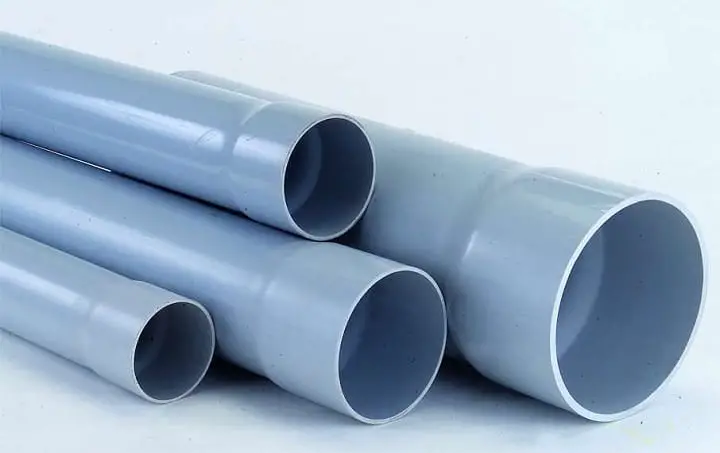
PVC, acrylic, or plastic-specific adhesives can offer a secure yet flexible bond.
The product you use should be able to glue the two plastic pieces together into a single unit.
Moreover, go for the adhesive suitable for use with plastics, waterproof, and weatherproof so that they are durable.
Which glue can satisfy all of those requirements? We have three options for you as follows:
Solvent cement
Solvent cement employs CPVC resin and solvents to chemically bond the materials. It is fast and easy to install.
This glue makes a single continuous section of thermoplastic rather than merely connecting two sections.
The glue contains various substances. You can use it to remove any lingering traces of previous glue from the materials and glue acrylic to PVC easily.
Epoxy glue
Epoxy glue is a synthetic compound made of an epoxy polymer and a hardener. It works to attach various surfaces, whether they are different or the same.
The glue can create a thermosetting bond that is robust, resilient, long-lasting, and resistant to harsh environmental conditions.
This two-component adhesive chemically bonds acrylic to PVC. However, it’s pretty expensive and requires a regulated environment to perform the best.
PVC cement glue
PVC cement is a type of chemical solvent. You can use it to fuse two different pieces to form a strong connection.
Three types of plastic pipes are used, but we can call them PVC pipes in general. Each type requires a special cement to attach to different materials.
Instead of just bonding two surfaces together, PVC cement glues acrylic to PVC by forming a solid bond that melds. The sealant is weatherproof, waterproof, and transparent.
Step-By-Step Instructions
Once you choose the right type of glue, you are halfway to success. Then, follow these three simple steps to get your job done.
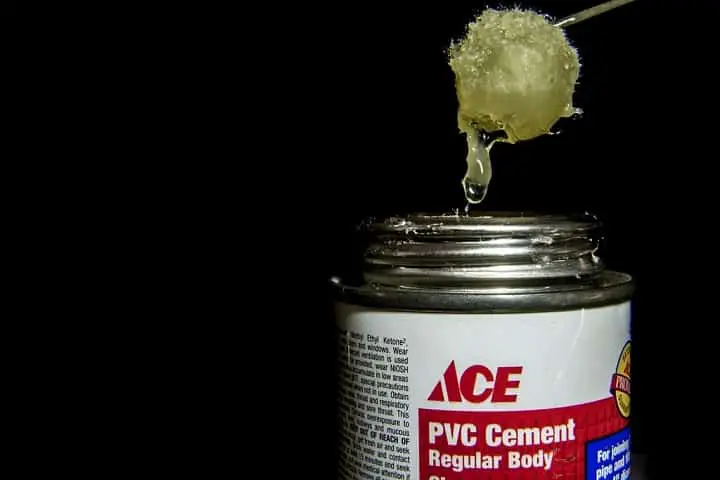
Step 1: Preparation
Before using the glue, always clean and let the objects dry to eliminate dirt or grime. You need smooth surfaces to work with.
Depending on the acrylic and PVC you choose and the purpose of your project, it could be essential to roughen the surfaces. You can use sandpaper or a wool brush to scrub them, making the glue easier to grip.
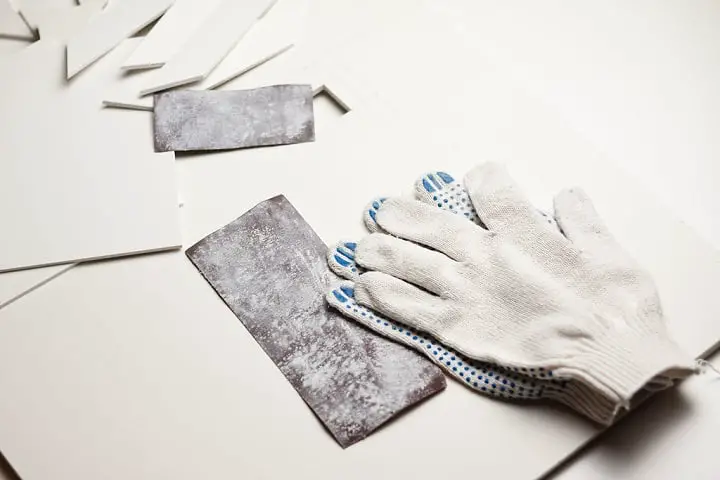
Step 2: Application
Before gluing acrylic and PVC together equally, apply glue to both surfaces and wait until it becomes sticky.
The chemical process that fuses or joins your materials together starts fast, although most plastic-specific pastes take some time to cure.
As soon as the adhesive seems sticky to the touch, you should have your surfaces ready to attach.
To enhance the effectiveness and durability of the bond, spread a uniform coating of PVC primer to the surfaces before adding adhesive or cement.
The primer triggers the chemical reactions that will effectively weld the two materials together by softening the PVC and acrylic.
The procedure is more effective when the plastic has already begun to soften when applying cement formulated for plastics.
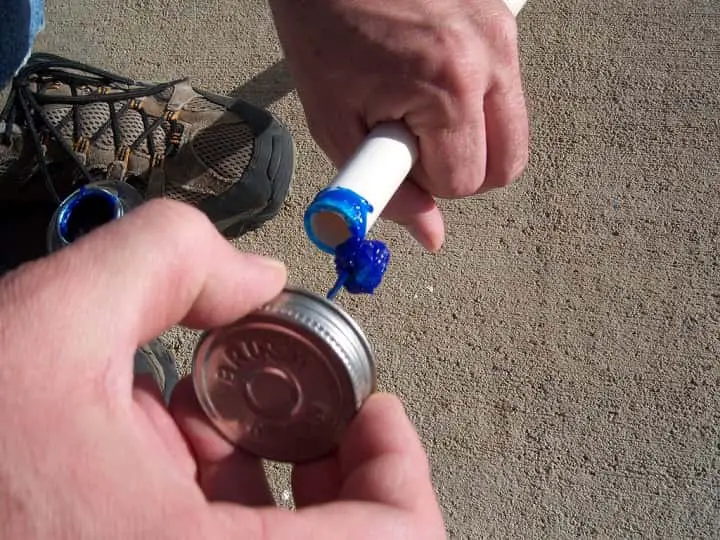
Step 3: Curing
Avoid letting a primer dry before using cement or adhesive if you decide to use one. The primer can activate only after you apply the glue and attach the materials.
Once you have secured everything with glue, you might need clamps to prevent the pieces from shifting or slipping.
The amount of time it takes to settle may vary depending on the moisture, temperature, and adhesive or cement you employ.
Always follow the manufacturer’s instructions and recommendations to get the best results.
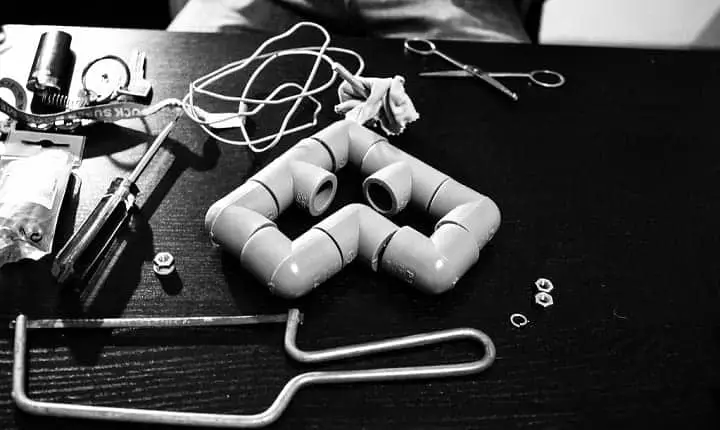
Extra tips
Working with chemicals demands caution. When following our instructions, keep these tips in mind to have the expected result and stay safe:
- Work in a well-ventilated, well-lit environment.
- Be careful not to clamp the bond too firmly. The PVC or acrylic may break if there is too much pressure.
- Avoid breathing or swallowing the plastic epoxy’s fumes.
- Keep animals and children away from your workspace.
You may consider: How To Remove Glue PVC Pipe? Professional Tips For Quick Results
Frequently Asked Questions
1. Does PVC cement glue acrylic?
Yes. PVC cement forms a solid connection between the materials, giving them a waterproof and weatherproof bond.
2. Can Gorilla Glue work on acrylic?
Yes. If you wish to apply Gorilla glue on acrylic, you must roughen up the surfaces because it doesn’t become dry easily.
However, this glue is not suggested for use with PVC plumbing or tubing.
3. Can Liquid Nails work on PVC?
Yes. Liquid Nails glue is a heavy-duty paste for bonding many kinds of materials. It can work on PVC and form a strong bond between PVC and other surfaces.
4. Will super glue ruin acrylic?
Yes. Super glue is indeed incredibly powerful, but it loses its power quickly.
The super glue will weaken due to moisture after a few days, resulting in the acrylic coming off.
5. How long should PVC glue dry?
You have to hold the pieces firmly for 30 seconds for the cement to harden.
Then, it needs about 15 minutes to settle. However, you should wait two hours until the glue can cure fully.
Conclusion
You can glue acrylic to cement using PVC glue, epoxy glue, or solvent cement. Follow the steps we have described to attach your materials successfully.
Hopefully, you will find this article helpful. If your friends don’t know how to glue their acrylic and PVC objects, share this post with them. They will appreciate your help. Thank you for reading!
